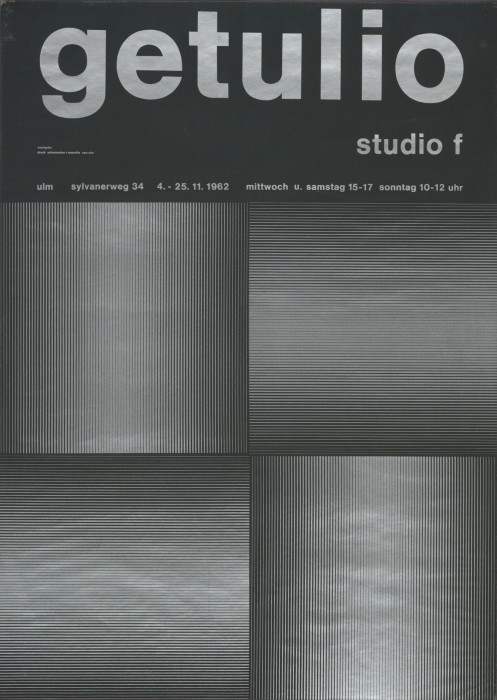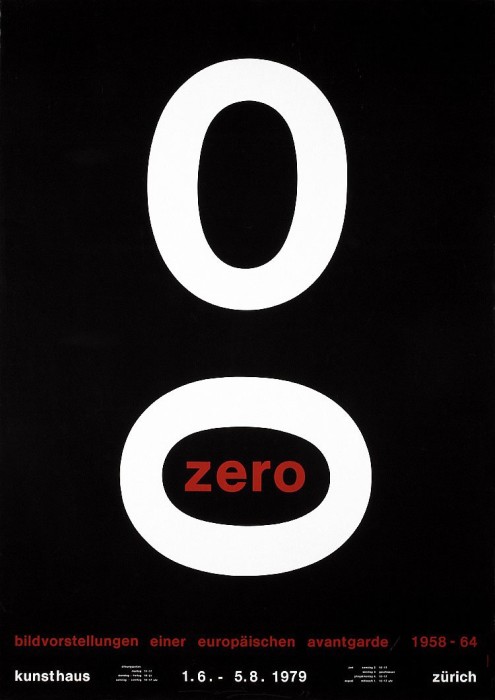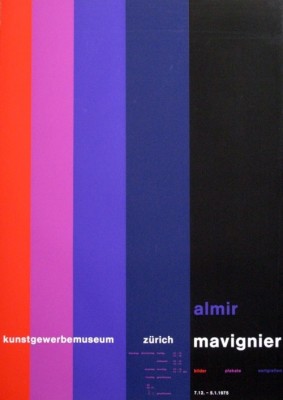Galeria Nara Roesler | New York is pleased to present Almir Mavignier: Privileged Form, featuring posters by Almir da Silva Mavignier (b.1925, Rio de Janeiro, Brazil). The exhibition will also include a seminal "Kinechromatic Device" produced circa 1955 by Abraham Palatnik (b.1928, Natal, Brazil), a sculpture that employs light play to create kaleidoscopic images. Palatnik's and Mavignier's trajectories overlap, as both artists, along with critic Mário Pedrosa and artist Ivan Serpa, were united in pursuit of what Pedrosa called a "privileged form." Almir Mavignier: Privileged Form will be on view from March 2 through April 14, 2018.
The aesthetic strategies employed in Mavignier's posters to investigate form and color have long been present in his practice. His work is informed by his early experiences in Rio de Janeiro, his time in the Constructivist Ulm School in Germany led by Max Bill, and his association with Group Zero. Mavignier masterfully embodied the artistic principles expounded by these movements in his designs, a skill that led him to secure a key position as poster-maker for the 20thcentury avant-garde. The presented pieces reflect the scope of Mavignier's production and include posters made to announce exhibitions by artists, movements, and institutions such as Paul Klee, Group Zero, and the Museum of Concrete Art. The show will also highlight posters produced to publicize exhibitions by Jesús Rafael Soto and Abraham Palatnik,emphasizing the commonalities between Mavignier's practice and the formal investigation led by these artists.
Between 1946 and 1951, Mavignier led the painting studio, which he co-founded with Dr. Nise da Silveira, at the psychiatric hospital in Engenho de Dentro, Rio de Janeiro. His experience with psychiatric patients led him to recognize that an artist's "creative fantasy" comes from within. Throughout these early years, Mavignier produced his first abstract works, which were situated between geometric form and organic figuration. The artist's experience at the psychiatric hospital also drew him close to Pedrosa, Serpa, and Palatnik. Pedrosa's thesis concerning form as an object of direct experience provided a theoretical framework for the artists who surrounded him to conceptualize the patients' inherent artistic potential, witnessed at Engenho de Dentro. During this period, Palatnik produced his first prototype for a Kinechromatic Device, which projected sequential patterns of colored light onto a semi-translucent screen. The piece in the exhibition, Untitled (c. 1955), is one of the artist's early attempts to control these patterns with a hand-turned knob, a process that later, in the 1960s, became automatic. As art historian Dr. Michael Asbury points out, "The mechanical character of the work combined with the association with his colleagues posits those early experiences at the psychiatric hospital firmly withinthe Brazilian constructive tradition, or so it seems."
The late 1940s and early 1950s marked the dawn of the Concrete age in Brazilian art, a transition largely marked by Max Bill's first exhibition in São Paulo. As the Concrete poet and art critic Ferreira Gullar explains, "The end of the [Second World War] aroused a wave of optimism and renewal, which was reflected in the arts. The Max Bill exhibit in São Paulo, in 1949, created the first connection with the Ulm group, the heir of some ideas from Bauhaus…"2 Bill, who would later become Mavignier's teacher, put forward the idea of beauty as product of mathematical form. The Ulm artists he led sought to replace naturalist reproduction by pursuing a fundamental understanding of the structures that surround us, focusing on point, line, and plane. Contact with Bill's practice shifted Mavignier's perspective on the representation of form. As the artist states, "I began to research forms and I began this non-naturalistic painting … a new world opened to us, so we were free."
Mavignier began his poster production in 1953 while studying under Bill at the Hochschule für Gestaltung Ulm (Ulm School of Design), and incorporated his newfound freedom into his designs. Toward the end of the 1950s the artist's posters took on a quality that he describes as "modular." These designs employed repetition to transform compositional and chromatic elements into mathematical constants. From 1960 onward, the artist continued to explore structured repetition through his "additive posters," each designed to be presented next to a print of itself, establishing a repetitive and continuous design. His handling of color also reveals the influence of Josef Albers, who lectured at the Ulm School from1953 to 1954. Mavignier's consequent focus on the relationship between colors is particularly noticeable in posters that employ typography in colors that, from afar, cause the words to seemingly coalesce with the background. As a result, theposters perform their informative function by captivating the viewer through a play of color and form.
Mavignier remained in the Ulm School until 1958, the same year he first exhibited with Group Zero, in Düsseldorf, Germany. The group united over the rejection of gestural abstraction trending in Europe at the time, and sought to employ simple colors and serial structures to approach a forward-looking minimal aesthetic. To that end, Mavignier developed a series of paintings that presented patterns of colored paint droplets with pointed tips. The movement's focus on light and space was also consistent with Mavignier's concern with the optical elements that mediate the relationship between observer and artwork. In the creation of his posters, he generates a perceptual response in the viewer's eye by combining contrasting color elements with geometric forms. Not only did Mavignier adopt the aesthetic principles put forward by the group, but he also produced posters for fellow artists in the Zero network, such as Jesús Rafael Soto. Mavignier's attention to color and form accentuates the work by the Venezuelan artist, whose practice focused on the perception of movement. Through his involvement in important art historical junctures, Mavignier's art anddesign became not only suffused with the most innovative ideas of his time, but also a relic of the post-war avant-garde.
This exhibition was developed in collaboration with the Institute for Studies on Latin American Art (ISLAA), and Galeria Nara Roesler would like to thank ISLAA for making its historically significant collection of 40 posters available for the exhibition. ISLAA is a private research institute that advances scholarship and public engagement with art from Latin America through its program of exhibitions, publications, lectures, and institutional partnerships.





